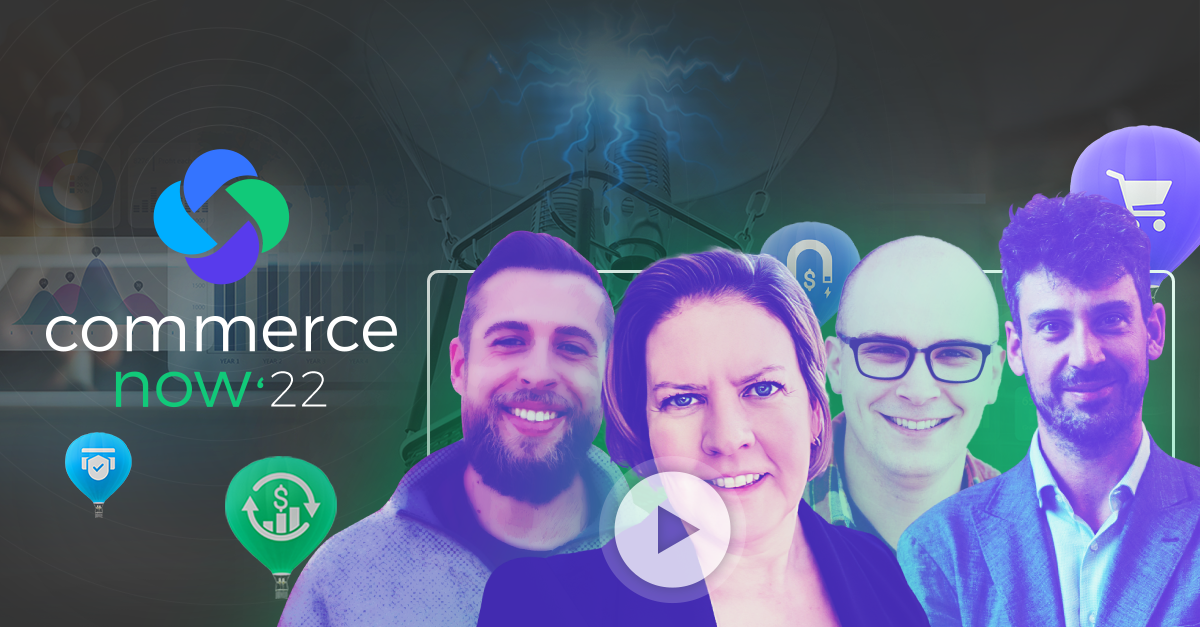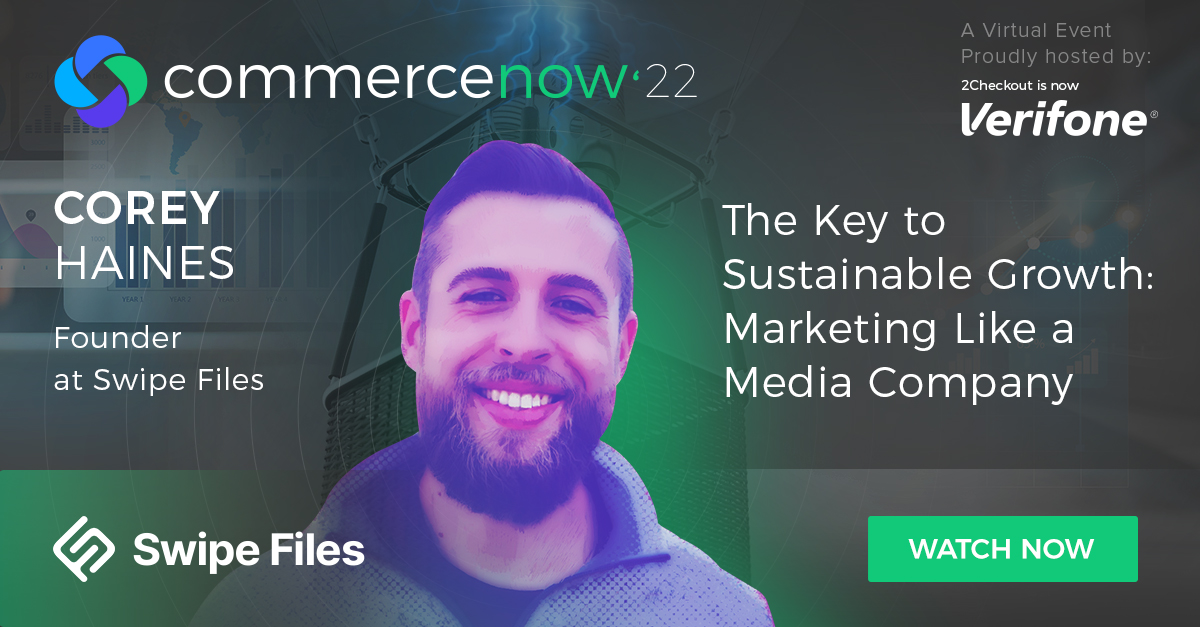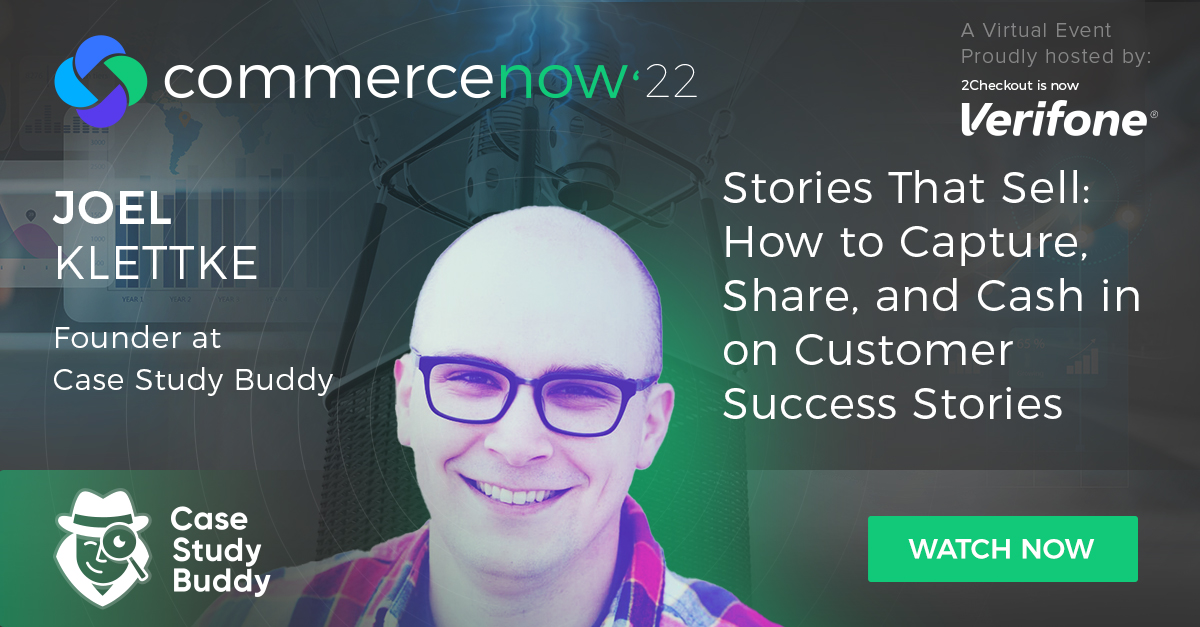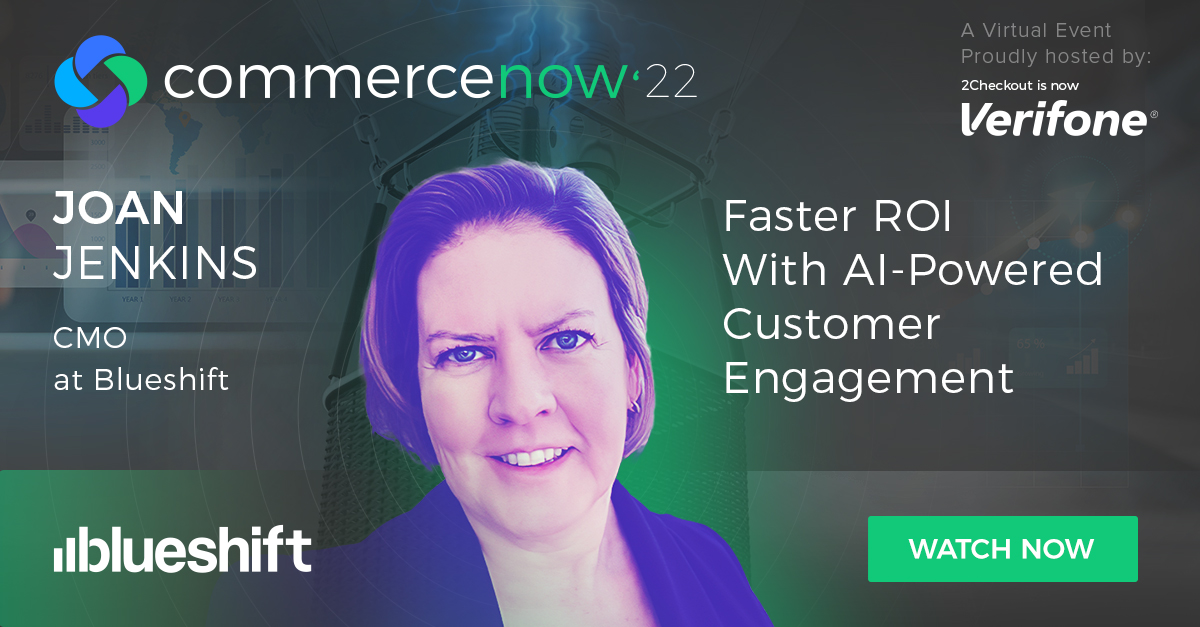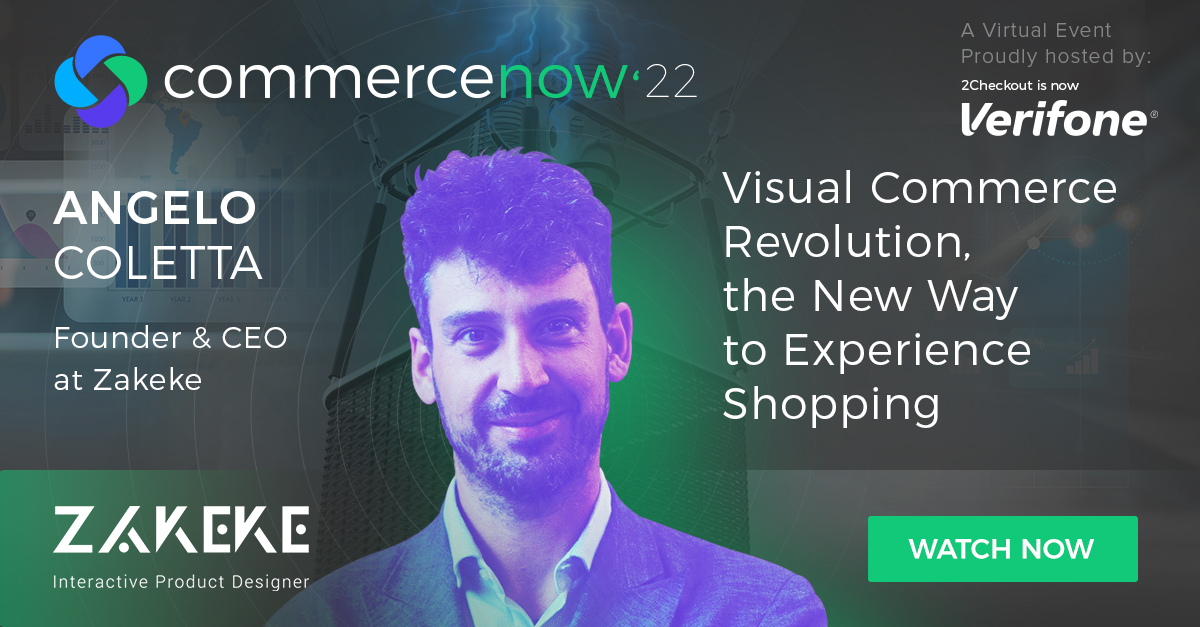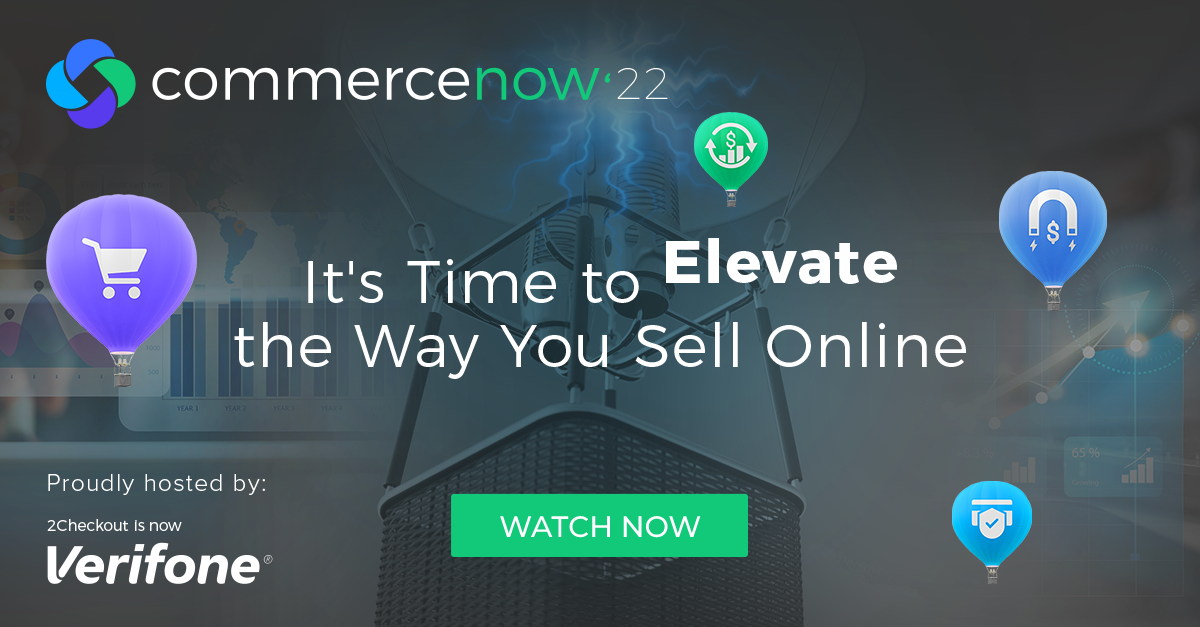This summer, founders, CEOs, marketers, sales reps, and revenue leaders in the eCommerce space gathered virtually to share their experiences, best strategies, and ultra-powerful industry insights at the CommerceNow conference, an event hosted each year by 2Checkout (now Verifone).
As with past versions of the event, participants were treated to a comprehensive and highly informative program of virtual sessions and presentations from the foremost experts in the field of eCommerce and digital retail. In this fourth and final series of blog posts, we’ll share takeaways from these CommerceNow ’22 sessions, straight from the experts. If you want to view the complete sessions, you may register to see all the recorded webcasts here.
Corey Haines, founder of Swipe Files, provided an innovative and intriguing perspective on new ways to market with “The Key to Sustainable Growth: Marketing Like a Media Company.”
“I think this is going to be the main next frontier for marketers going forward, especially for SaaS and subscription companies in the next five to ten years,” Corey opened. As customer acquiring costs get higher, it’s more and more competitive to hold their attention, he added.
“It’s one thing to go viral one day … It’s another to build a brand around the content you create and who you are.”
Corey proposes the solution: Treat the output of your marketing like a product in and of itself, the way media companies do, with the “noise” you make with marketing the means to an end.
So, what does marketing like a media company look like?
Corey provided numerous examples under the core umbrella idea of what he calls the Orb Framework: strategically leveraging owned, rented, and borrowed platforms.
What media companies have in their back pockets is a deep understanding of platforms and the ranks of distribution means, he says. And if your business is too dependent on one platform, and that platform decides you can’t share your content anymore, you’re in trouble.
What the Orb Framework aims to do, Corey explained, is to break down these different qualities of means of distribution and balance platform vulnerabilities, in a smart way that de-risks, diversifies, and ensures businesses are not going to be exposed to long-term platform risk.
So … what exactly are “borrowed,” “rented,” and “owned” platforms? Corey explained:
Borrowed Platforms are completely out of your control—prominent—or ordinary—individuals and their social newsletters, blogs, podcasts, community, etc.
Rented Platforms are subject to algorithms, distribution rank, and other external factors—social accounts, platform listings, external publications.
Owned Platforms have a direct relationship with your audience—these are emails, blog posts, website, etc. These are your superior forms of distribution.
The good news, he clarified, is that we can drive people back to our owned platforms, using the borrowed platforms as the means to an end—every time we use them, he says, it should drive visitors back to our rented and owned platforms. Then, he continued, you’re always building your list up in your owned platforms, therefore diversifying and de-risking.
And how do businesses incorporate marketing like a media company into a holistic strategy?
Corey summarized what the strategy should be for each level:
- Borrowed: Make a list of everyone and everything that has the attention of your audience
- Rented: Meet your audience where they are (LinkedIn, YouTube, Twitter)
- Owned: Invest in owned platforms that cater to what your audience wants and what you do best
With rented platforms, Corey shared, one of the biggest opportunities is to build media personalities. “People want to follow people,” he explained. Big companies like Tesla have now shifted to Elon Musk as the brand, with his 100 million Twitter followers, this is one of the best-known examples of this shift.
Corey urges companies to build multiple personal brands, each of which appeals to different audiences—more powerful, too, than just building one corporate brand. One simple way to start this is by amplifying your founder, and Corey shared multiple successful examples.
“A single tweet from a founder, who likely has innumerable followers, can bring lots of attention to their brand with very little effort,” he pointed out.
With borrowed platforms, Corey shared, it’s important to tap into existing audiences to build your rented and owned platforms when you’re building your brand.
Looking to discover more growth strategies? Then make sure to watch Corey’s full session here.
__________________________________
Joel Klettke, founder of Case Study Buddy, shared how businesses can best use case studies to drive leads, find prospects, and close deals, in his CommerceNow presentation “Stories That Sell: How to Capture, Share, and Cash in on Customer Success Stories.”
“It all boils down to one question: what are the best companies doing differently, and what can we learn from that?” Joel emphasized. There are four key areas of doing customer success stories, he said, and it requires looking at the ways companies 1) Strategize, 2) Systemize, 3) Capture, and 4) Share.
Strategize
“It’s easy to just say ‘it’s so difficult to get customers to take part!’, but the success of your case studies actually begins way before you make the ask,” Joel pointed out, adding that lack of internal access and alignment can kill case studies before they even happen.
The core problem, Joel shares, is that so often it’s thought that the marketing team is the only department who needs case studies, but every department—from leadership and sales to customer success, and, yes, marketing—plays a role. Every team has a different view and different needs and priorities, he pointed out. “Get you teams talking and sharing,” Joel urged.
How do you navigate internal objections? Get other teams involved, said Joel. Ways to do this:
- Leadership mandates can help
- Consider incentives that are monetary or appeal to ego
- Schedule and simplify the process. “Win Wednesdays,” for example
- Communicate clearly to minimize uncertainty. “Here’s exactly what the ask, process, and outcome will look like, and we will continuously keep you in the loop.”
- Address competitor fears by pointing out that prospects should see case studies, so going out of the way to hide from competitors may not actually pay off.
And your external strategy? “Happy accidents are not a strategy, and you can’t rely on volunteered stories,” Joel emphasized. Instead, be strategic about:
1. Goals for these assets—WHAT
2. Audience for the assets—WHO
3. Channels for deploying the assets—WHERE
Be clear along the way what the company’s goals are, Joel added. Are you trying to grow, aiming to differentiate, struggling for buy-in, avoiding leaving money on the table?
Finally, your channels are determined by the awareness level of your audience, and their expectation of how they will engage with you on that format will determine focus, length, and asset type. Take the time to map these things out, Joel urges.
Systemize
Next, Joel continued, look again internally and figure out how to systematize the way you get this done, documented, and shared. He described the three core areas:
A. Priming—the way you identify candidates and document the ways they fit for different teams or departments in terms of role, pain point, objections, desired outcome, and progress. Map out touchpoints with case study candidates: who “owns the transaction? When and where does it happen? What info is exchanged and how do we keep track of what’s learned? Then, how are the metrics shared?” Revisit these touchpoints regularly as a team.
B. Prospecting—run an NPS survey and follow up with your advocates—what’s making them so happy, and would they be willing to be featured? Look for people who’ve left reviews voluntarily, as they might be willing to participate in a bigger story. Also, run customer feedback surveys and then approach them. “We loved your feedback; could we feature you in an upcoming customer success story?”
C. Making the Ask—Joel urges preparing a standardized approach, to avoid possible roadblocks like uncertainty (“We will let you review a final draft before publishing, of course!”, potential inconvenience (“The steps will be the following and it will take X amount of time”), and just plain selfishness (“We’d love to offer you a discount in return”). In your pitch, Joel urges, keep it short, state the goal of the piece, and give it a deadline. Sharing samples of the end product might also help them decide to participate.
Capture
Once you have buy-in, how do you get a solid story? Joel suggests core elements to consider:
- Turn your interviewee into a storyteller
- Structure your interview around what their experience was BEFORE they used your product, what was it like WHILE using it, and what RESULTS have they seen.
- Ask leading questions that lead to storytelling, not just generic answers.
Joel shared tips for writing the piece: start with an intro that sets the scene; share the solution and the how and why; outline the results and impact; and finally, provide a content-rich CTA.
Share
“Share differently,” Joel asserted. Using a food analogy, he suggested using case studies to address a full campaign’s worth of content for every team in the company: from a nibble (testimonial blurbs pulled from the story); to a bite (slide deck for the sales team); to snacks (some of the main details for leadership); all the way up to the complete meal (the full deep-dive asset).
In need to find out more on how to build the perfect case study? Watch Joel’s full session here to learn what a successful case study process looks like in practice.
________________________________________
“AI plus marketing is really where it’s at to be successful today,” opened Joan Jenkins, CMO of Blueshift, in her presentation “Faster ROI With AI-Powered Customer Engagement.”
“It’s all about human-centric experiences—humans and AI working together,” she added.
Joan cited three key statistics to keep in mind when considering upgrading your marketing approach:
- 73% of customers point to experience as an important factor in their purchasing decisions. For marketers, each marketing interaction needs to be a customer experience interaction, Joan asserted.
- 65% of customers find a positive experience with a brand to be more influential than great advertising.
- 32% of customers say they would walk away from a brand they love after just one bad experience.
The disconnect between CX channels and brand actions, Joan said, comes down to the following three challenges:
1. Incomplete understanding of customer interactions
2. Difficulty of building next-best-action
3. Both of which lead to inconsistent customer experiences across channels.
Joan pointed out the dizzying array of choices brands must utilize—email, call center, paid media, chat/support, mobile push, website SMS, direct mail . . . but the foremost challenge is still to deliver the personalized, one-on-one customer experience in the channel they prefer.
How to do this? Joan said this is where AI comes in, as it helps businesses scale and unlock those customer-centric experiences. She suggested thinking about it within the following four areas:
- WHO to target—AI helps you segment with precision, by customer profile and lifestyle stage.
- WHAT to recommend—Should we give them content, an offer, a product?
- WHEN to engage—send-time optimization.
- WHERE to deliver—most effective channel through which to engage.
Joan provided an example of use-case subscription churn reduction. The role of AI is to help determine who is likely to churn, and can you deliver an offer on a one-to-one level, so they won’t? AI can also inform what channel and what timing would be most effective. Another example of what AI can do, Joan continued, is to provide predictive recommendations and understanding of what the customer wants. Like Netflix’s “based on what you watched before, you might like X.”
Joan urged businesses to not underestimate send-time optimization, another aspect that can be predicted by AI, as it can result in a hug difference in engagement levels and a better overall customer experience.
Joan also emphasized that in a broader way, AI-powered experiences can unlock growth, sharing several examples of Blueshift customers who showed dramatic revenue increases using AI.
The bottom line? Joan cites a Gartner quote: “Multichannel campaigns—currently designed by manually defining campaign flows—will be transformed by AI-enabled orchestration based entirely on a customer’s self-guided journey.”
Don’t miss Joan’s full session to discover some insightful best practices on how to get faster return of investment with AI-powered customer engagement.
_________________________________
Angelo Coletta, Founder and CEO of Zakeke, echoed Joan’s assertions about the importance of AI in the customer journey moving forward in his session, “Visual Commerce Revolution, the New Way to Experience Shopping.”
“eCommerce is changing, and everything is about image and video now,” Angelo opened. “Customers want something special.” Where the eCommerce industry used to be about one product, one shipping method, and one way to pay—that has all changed dramatically, he pointed out, and he believes that in the next five to ten years there will be no eCommerce marketing that doesn’t include an interactive visual experience.
“This is not only a technology trend, but it will serve marketing expectations on one side and the customer expectation on the other.”
By implementing AI, Augmented Reality (AR), and virtual try-on, Angelo continued, the customer can interact with products through a cohesive user experience, leading to minimized returns, fewer supply chain shortages, and ultimately a more sustainable way of doing business.
Angelo explained how using this technology can give an even better experience than a customer might get in a brick-and-mortar store and adds to the eCommerce online experience. “Ultimately, it optimizes engagement with the brand, and it’s here to stay,” Angelo asserted.
“The virtual shopping experience is now a necessity for retailers and has also been shown to dramatically increase a business’ customer base and return visitors to product pages,” he added. Angelo shared some examples of customizable products that offer 3-D views and very high visual quality which makes brands (and their customers) happy.
“It’s crucial for retailers to understand the synergy between using 2D, 3D, AR, and VR together in order for their businesses to thrive with a full suite of interactive and immersive tools,” Angelo concluded.
Make sure to watch Angelo’s session to find out how to leverage Augmented Reality in order to transform the customer journey into more than just a transaction.
___________________________________
Want to access and benefit from more expert tips and tricks from this year’s CommerceNow? To view this year’s webinars, register here.

